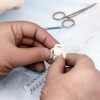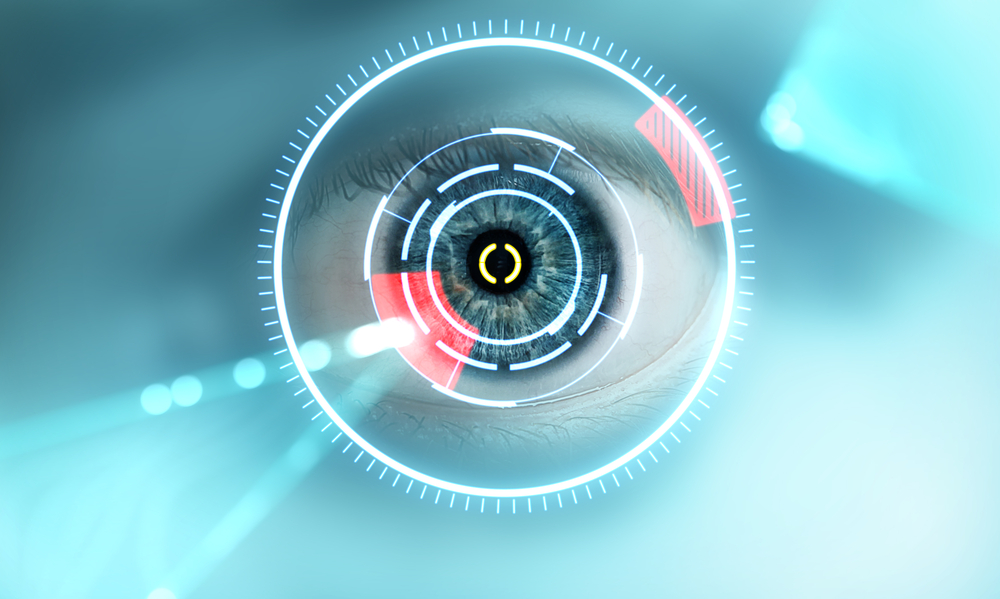Coronavirus disease (COVID‑19) has rapidly emerged as a global health threat. The virus was officially named as “severe acute respiratory syndrome coronavirus 2” (SARS‑Cov‑2).[1] According to the Centers for Disease Control and Prevention (CDC), the incubation period of COVID‑19 falls within 2–14 days.[2] The incubation period can be as long as 24 days. Symptoms of the infection include fever, cough, fatigue, breathlessness, loss of sense of smell, and diarrhea. Conjunctivitis has also been reported in a small proportion of patients.[3] The disease‑causing viral agent is highly contagious and believed to be transmitted through respiratory droplets and/or contact with an infected person. Transmission via ocular surface has also been reported.[3]
Various infection control measures have been evolved in the last few months to minimize the spread of infection to both patients and health care workers. Hospitals have adopted a triage system to minimize cross‑infection. Elective surgeries in all specialties, including ophthalmology, have been suspended since the last week of March 2020. Guidelines are evolving regarding protective measures to be adopted by doctors and paramedics. There are specific guidelines for ophthalmologists while examining patients in slit‑lamp. Eye Banking is an integral component of eye care services. The present times brought in several deviations from the existing eye bank practices. The eye banking activities would need strategic planning for the future when the situation normalizes. The pandemic has made the eye bankers reflect and introspect crisis that can occur and help devise a plan to handle a similar situation ifit arises in the future.
The functions of the eye bank comprise collection (harvesting), evaluation, preservation, and distribution of corneal tissue. The donor cornea is harvested by trained eye bank technicians, ophthalmologists, and general practitioners in a variety of settings like home, ward, and mortuary. Donor cornea, however, carries the unknown andunquantifiable risk of transmission of disease to the recipient that falls into three main categories: infections, neoplasms, and corneal disorders. The contraindication list for eye bank is relatively well laid down, with slight variations globally. The list of contraindications is divided into relative and absolute. Harvesting eyes from donors with conditions potentially hazardous to eye bank personnel should be strictly avoided. Therefore, death due to COVID‑19 will fall into this category. The second category of contraindication includes conditions with the potential risk of transmission of local or systemic communicable disease from donor to recipient. Since there is a risk of transmission via ocular surface, it carries a risk of transmission to the recipient. It is too early to have evidence that SARS‑CoV‑2 can be transmitted by blood transfusion or tissue transplantation. While deaths due to proven COVID‑19 can be avoided, without a doubt, the challenge remains how we screen death due to other causes, where there might be a subclinical infection or undiagnosed cases of fever and pneumonia. Maybe a rapid screening test for all donors can help to rule out in the future.
The harvesting can be planned after following a triage system that is used in clinics.[4] The detailed history may be elicited from family members before collection. The collection can be restricted only to the death cases due to completely nonrelated causes like a road traffic accident, hanging, poisoning, etc., Those on ventilators of any time duration should be avoided. Postmortem is performed for all of the above cases. The protocol followed in mortuary needs close vigilance, especially during such pandemic.
The clinical and serological evaluation may not carry specific risks as long as persons handling tissues use general precautions like other health care workers in a hospital setting. Since elective surgeries are suspended during the pandemic, the collected tissues may be wasted. We may consider the use of preservative media like Cornisol, where tissue can be preserved for 10–14 days.
Although elective surgeries like optical keratoplasty can be postponed, there is a need for emergency therapeutic and tectonic keratoplasty. In India, the most frequent indications of corneal transplantation are infection.[5] Currently, most of the eye banks in India have discontinued collection through the Hospital Corneal Retrieval Program, which is a major source of cornea collection. The challenge is to manage large perforation and/or large infiltrate, especially one‑eyed patients, in an emergency. We have to fall back on alternative procedures like glycerin‑preserved cornea, tissue adhesive (small perforation), conjunctival hood, complete tarsorrhaphy, etc., for tectonic purposes as an interim measure of managing the globe threatening conditions.
In view of the prevailing uncertainties related to a state of normalcy, when eye banking activities can be restored to original times, there is also a need to establish guidelines on ways to restart eye banking activities in the future. Each eye bank has to come up with a plan that works in a specific geographical location keeping a track of the updates on the stage of spread of the COVID‑19 disease in the area of operation of the eye bank. Stringent safety measures need to be adopted by the eye bank technicians that would include personal protection equipment during donor cornea retrieval.
With the addition of new disease, the list of contraindications gets added up. Therefore, it should be a dynamic document. This pandemic is an opportunity to brainstorm innovative newer methods for long‑term storage of corneal tissue, especially for an emergency like this in the future.
Sunita Chaurasia, Namrata Sharma(1) , Sujata Das(2).
Cornea and Anterior Segment Services, L V Prasad Eye Institute, Hyderabad, Telangana,
- Cornea, Cataract and Refractive Surgery Services, Dr R P Centre for Ophthalmic Sciences, All India Institute of Medical Sciences, Ansari Nagar, New Delhi,
- Cornea and Anterior Segment Services, L V Prasad Eye Institute, Bhubaneswar, Odisha, India
Letters to the Editor [Downloaded free from http://www.ijo.in on Tuesday, June 9, 2020, IP: 176.59.46.240] 1216
Indian Journal of Ophthalmology Volume 68 Issue 6












